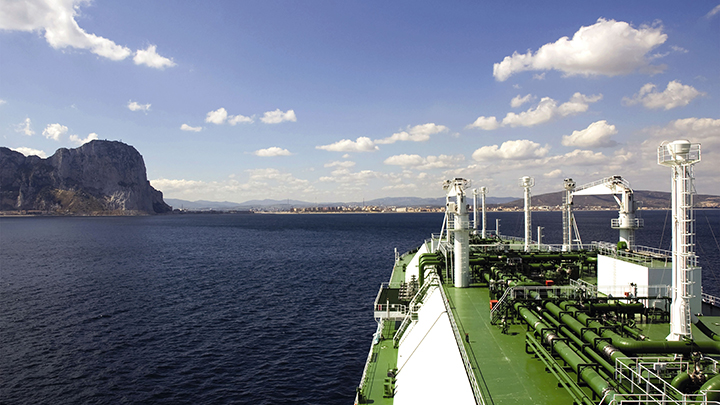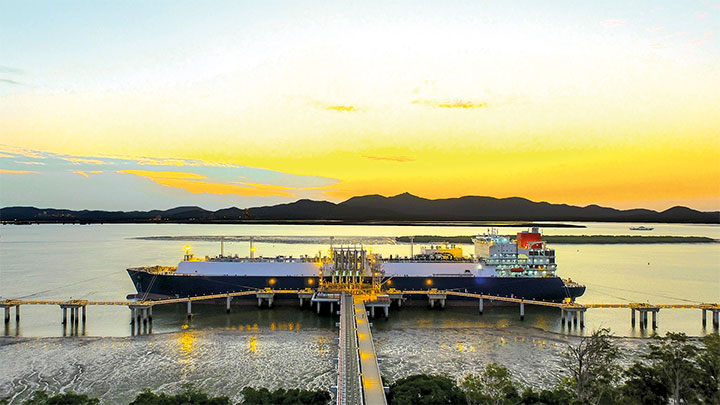Solving the issue of methane slip to prevent global warming
Methane slip is an event whereby gaseous methane escapes into the atmosphere. This can happen anytime methane is stored, transported, or used. As awareness has grown about methane’s feasibility as a greener fuel for the energy transition, so has the attention on methane slip. Even small amounts of methane can be of particular environmental concern due to methane’s potency as a greenhouse gas.
Why is methane slip relevant to the maritime industry?
Switching maritime engines from oil to liquefied natural gas (LNG) or synthetic natural gas (SNG) has the potential to radically reduce carbon dioxide (CO2) emissions. However, methane has a greenhouse effect roughly 28 times as strong as an equivalent amount of CO2 (over a 100 years timespan), which means that methane slip needs to be tightly controlled in order to make the fuel more environmentally friendly than heavy fuel alternatives. For the maritime industry, LNG and SNG are a critical part of the energy transition, as they offer a bridging solution between today’s fuels and those of the future, as well as significant emissions reductions.
What are the challenges currently needed to overcome in addressing methane slip?
Addressing methane slip depends on what kind of maritime engine it occurs in. For two-stroke gas engines, a process called direct gas injection can be used where, instead of mixing gas with air before it goes into the combustion chamber, it is injected directly. This process allows for an extremely small amount of methane to escape, between 0.2 and 0.3 g/kWh.
Four-stroke gas engines, which run on Otto cycle technology, are in higher need of reductions. MAN has been addressing methane slip in these engines since it introduced them in the mid-2000s. The company has already halved methane slip over the past ten years to a level where the combined GHG impact of CO2 and CH4 is today notably below the respective figure for liquid burning diesel engines.
It is possible to minimize methane slip, and in fact, we have done so substantially over the last ten years.
What are the plans to reduce methane slip from engines?
MAN Energy Solutions has been working on methane slip for over a decade. Currently, the focus is on three avenues: internal engine design, aftertreatment solutions, and introducing direct gas injection in four-stroke engines, as mentioned previously.
Direct gas injection is technically feasible, but under current conditions, it’s not economically viable, which is why the focus is on improving Otto cycle technology. It’s estimated that future improvements could reduce methane slip by another 20% over the next few years.
Aftertreatment solutions, especially oxidation catalysts, are a particularly attractive option, as they allow for a roughly 70% reduction in methane slip. Oxidation catalysts are already used in a plethora of other industrial processes to remove hydrocarbons from the exhaust. MAN started developing oxicat in 2017 and the first pilot installation on board a vessel will start in 2023. After the full tests, it is expected as a major technological solution for methane slip reduction, widely available roughly around 2025.
Read an interview with an MAN expert about the company’s plans
Explore more
-

Can methane slip be controlled
MAN Energy Solutions expert Gunnar Stiesch tells us how we can reduce methane slip in two-stroke and four-stroke engines for cleaner shipping with LNG.
-

LNG
LNG stands for liquefied natural gas, natural gas transformed into a liquid state through a cooling process. In its liquid form, natural gas has a significantly smaller volume for export, shipping, and storage. It is a low-emission, clean-burning fossil fuel that can be used for marine propulsion and transportation and regasified after delivery to a terminal.
-

Methane slip
MAN Energy Solutions is convinced that the switch to LNG marks an important step towards climate-neutral shipping and has prioritized the resolution of methane slip.
MAN Energy Solutions is now Everllence.
We have adopted a new brand name and moved to a new domain: www.everllence.com. This page will also be relocated there shortly. We are working on shifting all pages to www.everllence.com.
